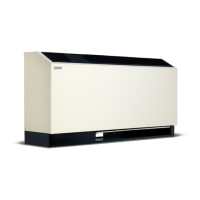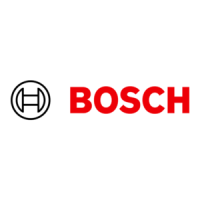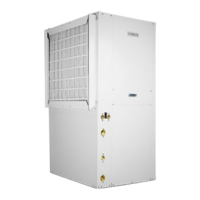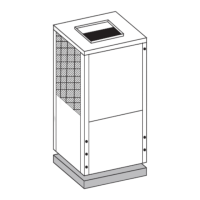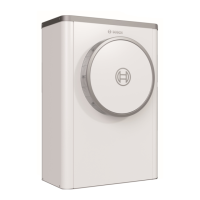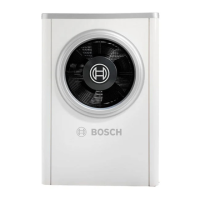Maintenance
15 Maintenance
WARNING
Personal Injury Hazard!
Servicing of this equipment can be hazardous due to system
pressure
and electrical components. Only trained and
qualified personnel should install, repair, or service the
equipment.
DANGER
Electric Shock!
Before performing service or maintenance operations on the
system, turn
OFF main power to the unit. Electrical shock will
cause personal injury or death.
15.1 Filter Changes
Filter changes or cleaning are required at regular intervals. The
time period between filter changes will depend upon type of
environment where the equipment is used. In a single-family
home that is not under construction, changing or cleaning the
filter every 60 days is sufficient. In other applications such as
motels where daily vacuuming produces a large amount of lint,
filter changes may need to be as frequent as bi-weekly.
15.2 Annual Checkup
An annual “checkup” by a trained and qualified HVAC mechanic is
required. Complete the check-out sheet on page #98 when
performing the annual maintenance checkup. Record the
performa
nce measurements of volts, amps, and water
temperature differences for both heating and cooling. This data
should be compared to the information on the unit’s data plate
and the data taken at the original startup of the equipment.
15.3 Annual Condensate Drain Cleaning
Clean and flush the condensate drain annually to ensure proper
drainage.
16 Handling Periodic Lockouts
Periodic lockouts almost always are caused by air or water flow
problems. The lockout (shutdown) of the unit is a normal
protective measure in the design of the equipment. If continual
lockouts occur call a mechanic immediately and have them check
for:
• water flow problems
• water temperature problems
• air flow problems, or
• air temperature problems.
Use of the pressure and temperature charts for the unit may be
required
to properly determine the cause.
17 Servicing and Repair Information
17.1 Personal Protective Equipment
Ensure that all personal protective equipment is available and
being used correctly.
17.2 Confined Space Work
Work in confined spaces must be avoided.
17.3 Controlled Work Procedure
All work must be undertaken under a controlled procedure to
minimize the risk of a flammable gas or vapor being present while
the work is being performed.
17.4 Safety Checks
Prior to beginning work on systems containing flammable
refrigerants, safety checks are necessary to ensure that the risk
of ignition is minimized. The following precautions must be taken
prior to conducting work on the refrigerating system.
17.4.1 Inform Everyone in the General Work Area
All maintenance staff and others working in the local area must be
instructed
on the nature of work being carried out.
17.4.2 Check for the Presence of Refrigerant
The area must be checked with an appropriate refrigerant
detector pr
ior to and during work, to ensure the technician is
aware of potentially toxic or flammable atmospheres. Ensure that
the leak detection equipment being used is suitable for use with
R-454B refrigerant;
i.e.
, non-sparking, adequately sealed, or
intrinsically safe.
17.4.3 Fire Extinguisher
If any hot work is to be conducted on the refrigerating equipment
or any asso
ciated parts, appropriate fire-extinguishing
equipment must be available on hand. Have a dry powder or CO
2
fire extinguisher adjacent to the charging area.
17.4.4 Ignition Sources
Ensure the following prior to the work taking place:
The area around the equipment is to be surveyed to make
sure that there are no flammable hazards or ignition risks.
"No Smoking" signs must be posted.
All possible ignition sources, including cigarette smoking,
must be kept sufficiently far away from the site of installation,
repair, removal, or disposal during which refrigerant may
possibly be released and exposed to the surrounding area
and the ignition sources.
Ensure that any person carrying out work in relation to a
refrigerating system that involves exposing any pipe work
knows that they must NOT use any sources of ignition in such
a manner that it may lead to the risk of fire or explosion.
50 |
CL Series Heat Pumps — 8733838716 (2024/05)
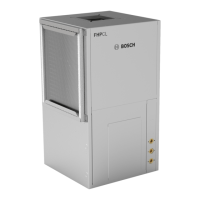
